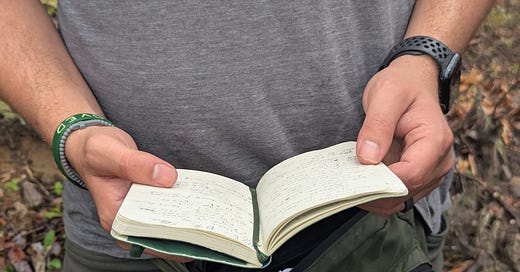This last week, I spent some time in North Carolina with some of my favorite people. One of my friends, Eric, made a passing comment about this Sunday’s lectionary text on “Doubting Thomas,” but, as I head in one sermon today, Thomas didn’t doubt any more than the other apostles; he just wanted the same experience they did, the opportunity of hands-on experience.
Anyway, we were sitting around talking about writing sermons for the coming week, and Eric looked at one of my other friends and said, “The real question is, ‘Why are the wounds still there?’”
I love this.
In years past, I’ve wondered aloud through various mediums that if we are to be raised just as Christ was raised, would we still have wounds from our past as Jesus did?
But today I want to focus on a different element of this, and it is related to my sermon from last week:
The purpose of the resurrection was not to undo the cross but to give meaning to it.
It’s as if God is saying, “There have been thousands of crucifixions, but this is one you need to pay even more attention to.”
And pay attention to it we have. From early Christians making the sign of the cross to the depictions of the crucifixion in medieval art, there is plenty of evidence of us paying attention to the death of this one man out of thousands.
But this truth, that the resurrection doesn’t erase the cross, is magnified by this story of Thomas.
Had God meant the resurrection to undo the cross, surely the wounds in Jesus’s side, hands, and feet would have been healed, but they weren't. They remained there for Thomas and the others to see and handle and touch.
But I think they are there for a reason beyond apologetic proof: the wounds remained to tell us that while our wounds and traumas and brokenness may remain, God is able to take those things and turn them into life.
The pain you experienced as a teenager was by no means inflicted by God, but God can use the affliction by calling you to minister to those who have been similarly afflicted. Your divorce, your addiction, your failures, your successes that went to your head—all of this can be resurrected three days later. All of this can be used to spread the good news of Jesus.
And, yet, the wounds remain.
I can still feel the pain of rejection, of excommunication. I bet you can still feel your wounds too.
But who knows how you can use your wounds to introduce someone to the good news of Jesus? Who knows how your wounds, like his, may be a testimony to the goodness of God, a goodness that is persistent despite the evidence we think is to the contrary.
I don’t know why bad things happen to good people. I don’t know why the wounds were still there for Thomas to see. But I have to believe that they were there to show us that God is still with us. We may think that God will swoop in and take all of our cares away, but God redeems all of us, wounds and all.
So when I consider my own wounds, I’m trying to learn to say, “My Lord and my God!”




